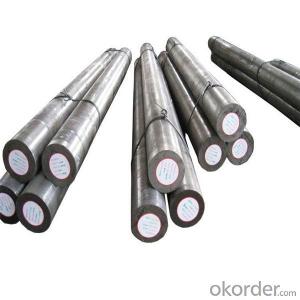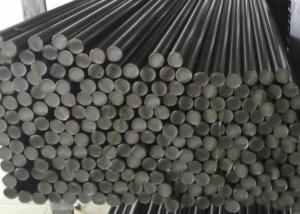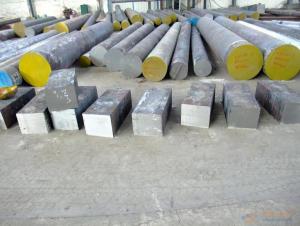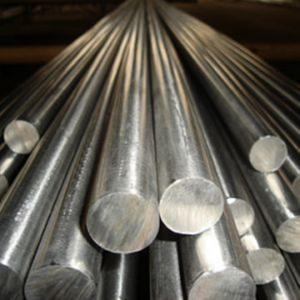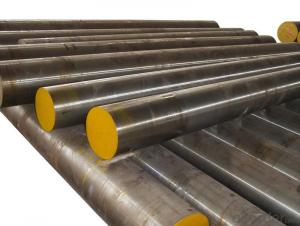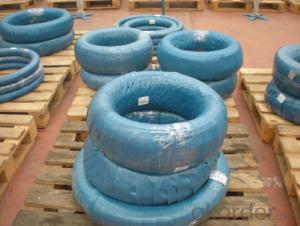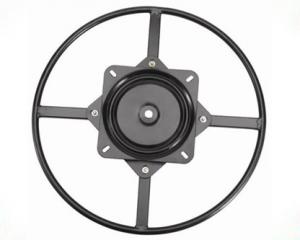SAE AISI ASTM 42CrMo4/4140 Alloy Steel Bar
- Loading Port:
- China main port
- Payment Terms:
- TT OR LC
- Min Order Qty:
- 30 m.t.
- Supply Capability:
- 10000 m.t./month
OKorder Service Pledge
OKorder Financial Service
You Might Also Like
Item specifice
SAE AISI ASTM 42CrMo4/4140 Alloy Steel Bar
Product Information:
1. Features Specifications: 42CrMo4 Alloy Steel Bar
2. Commodity: 42CrMo4 Alloy Steel Bar
Hot rolling craftwork and fine mechanical performance
Chemical components meet standards, delivery in black skin
3. Standards:
a) GB/T3077 42CrMo
b) JiS SCM440
c) Din 42CrMo4
d) ASTM 4140
4. Size: dia 12-160mm
5. Length:6M above
6. Packing:Bundles with iron wires
Product Overviews:
| Product Name | Typical Grades | Diameter(mm) | Standard adopted |
| Carbon Steel | 20 (1020/S20C/C22) | Ø16-Ø300 | GB/SAE/JIS/DIN |
| 40 (1040/S40C/C40) | |||
| 45 (1045/S45C/C45) | |||
| Bearing Steel | GCr9 (51100/SUJ1) | Ø12-Ø250 | |
| GCr15 (52100/SUJ2/100Gr6) | |||
| GCr9SiMn (A485-Gr.1/SUJ3) | |||
| Cr-Mo Steel | 20Cr (5120/SCr420H/20Cr4) | Ø12-Ø250 | |
| 40Cr (5140/SCr440/41Cr4) | |||
| 42CrMo(4140/SCM440/42CrMo4) | |||
| Gear Steel | 20CrNiMo | Ø16-Ø600 | |
| 20CrMn(5115/SMnC420/20MnCr5) | |||
| 20CrNiMo(8620/SNCM220/20CrMiMo2) |
Product Show:
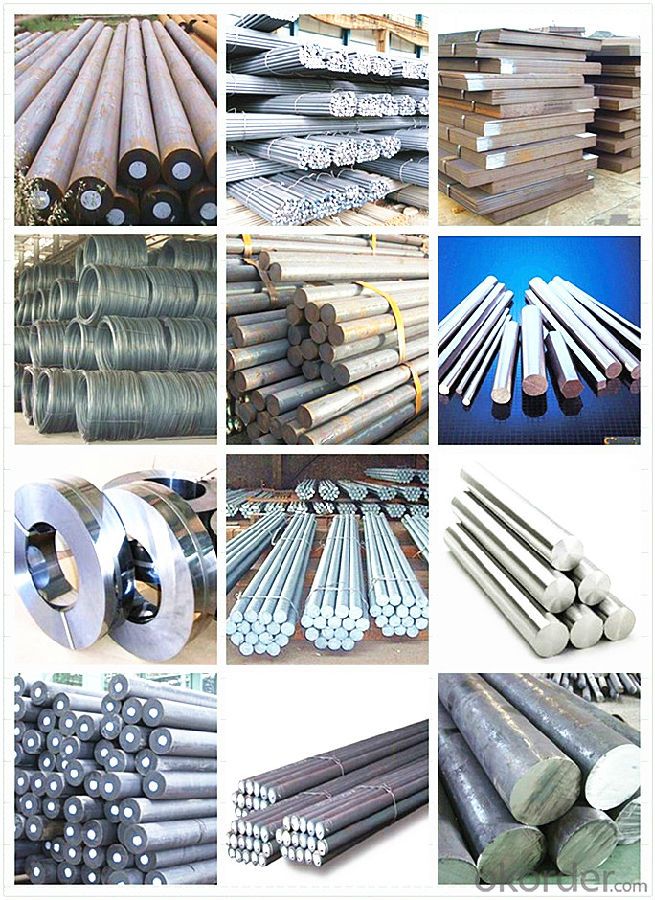
Our Advantages:
· Industry experience over 20 years.
· Shipment of goods -More than 70 countries worldwide.
· The most convenient transport and prompt delivery.
· Competitive price with best service.
· High technical production line with top quality products.
· High reputation based on best quality products.
With our experienced, enthusiastic and dynamic staffs, we assure to bring you the products with best quality, reasonable prices and good after-sales services under the motto: Friends First, Business After.
Communication, Experience, Expertise and Best efforts are our Promises to you.
- Q:How does special steel contribute to the automotive racing industry?
- Special steel plays a crucial role in the automotive racing industry by providing high-performance components and ensuring the safety and reliability of race cars. Its unique properties such as strength, durability, and heat resistance make it ideal for various applications in racing vehicles. One of the main contributions of special steel to the automotive racing industry is its use in the construction of engine parts. Components like crankshafts, camshafts, connecting rods, and valves are subjected to extreme forces and temperatures during racing. Special steel alloys, such as high-strength steels, are specifically designed to withstand these conditions and offer superior performance compared to conventional steel. This allows race car engines to operate at higher speeds, generate more power, and endure intense racing conditions without compromising reliability. Furthermore, special steel is also extensively used in the manufacturing of suspension systems and chassis components. Racing cars are subjected to extreme loads and vibrations while cornering and maneuvering at high speeds. The use of high-strength steel in these critical components enhances the structural integrity of the vehicle, improving stability, handling, and overall performance. In addition to performance benefits, special steel also contributes to the safety of race cars. Safety is of paramount importance in the racing industry, and the use of special steel in roll cages and crash structures provides enhanced protection to drivers in case of accidents. Special steel alloys, such as boron steel, offer exceptional strength and energy absorption capabilities, minimizing the risk of injury during crashes. Moreover, the lightweight nature of special steel allows for the reduction of overall vehicle weight, leading to improved fuel efficiency and better handling. By using advanced steel materials and design techniques, race car manufacturers can achieve a balance between strength and weight, optimizing performance without compromising safety. In summary, special steel plays a vital role in the automotive racing industry by contributing to the performance, safety, and reliability of race cars. Its unique properties allow for the development of high-performance engine parts, suspension systems, and chassis components, enabling race cars to withstand extreme conditions and achieve superior performance on the track. Moreover, special steel enhances the safety of race cars by providing robust crash protection, while also offering weight reduction benefits for improved fuel efficiency and handling.
- Q:What are the safety benefits of using special steel?
- Using special steel provides several safety benefits. Firstly, special steel is known for its high strength and durability, which makes it resistant to deformation and fracture, reducing the risk of structural failures and accidents. Secondly, special steel is often designed to withstand extreme temperatures, corrosion, and wear, making it suitable for various harsh environments and reducing the chances of equipment malfunction or failure. Additionally, special steel is frequently used in safety-critical industries such as aerospace and automotive, where it undergoes rigorous testing and quality control measures to ensure its reliability and performance. Overall, the use of special steel enhances safety by providing reliable and robust materials for critical applications.
- Q:What are the different methods of machining special steel?
- There are several different methods of machining special steel, each with its own advantages and applications. Some of the most common methods include: 1. Turning: Turning is a machining process that involves rotating a workpiece while a cutting tool removes material from the surface. This method is typically used to create cylindrical shapes and can produce high-quality finishes. 2. Milling: Milling is a versatile machining method that uses rotary cutters to remove material from a workpiece. It can be used to create complex shapes and contours, and is often employed in the production of special steel components. 3. Drilling: Drilling is a machining process that involves creating holes in a workpiece using a rotating cutting tool. It can be used to create both through holes and blind holes in special steel, and is commonly used in various industries. 4. Grinding: Grinding is a precision machining method that uses an abrasive wheel to remove material from a workpiece's surface. It is often used to achieve tight tolerances and smooth finishes on special steel components. 5. Broaching: Broaching is a machining process that uses a sharp cutting tool with multiple teeth to remove material in a series of linear cuts. It is commonly used to create keyways, splines, and other intricate shapes in special steel. 6. Electrical Discharge Machining (EDM): EDM is a non-traditional machining method that uses electrical discharges to remove material from a workpiece. It is particularly useful for machining special steel with complex shapes or for creating small features. 7. Laser Cutting: Laser cutting utilizes a high-powered laser to cut through special steel with extreme precision. It is commonly used for intricate designs and can produce smooth edges without the need for subsequent processing. Each of these methods has its own advantages and limitations, and the choice of machining method depends on factors such as the desired outcome, the complexity of the part, and the properties of the special steel being machined.
- Q:How does special steel contribute to the energy generation industry?
- Special steel plays a crucial role in the energy generation industry by contributing to the efficiency, reliability, and safety of various components and equipment used in power plants. One key area where special steel is essential is in the construction of turbine blades and generator rotors. These components are subjected to extreme temperatures, pressures, and mechanical stresses. Special steels, such as superalloys, are specifically designed to withstand these harsh conditions, ensuring the longevity and performance of these critical parts. By using special steel, power plants can operate at higher temperatures and pressures, leading to increased energy efficiency and power output. In addition to turbine components, special steel is also used in the construction of boilers and heat exchangers. These components are exposed to high temperatures and corrosive environments. Special steel alloys, such as stainless steels, are highly resistant to corrosion and can withstand the harsh conditions encountered in power plant operations. This corrosion resistance ensures the longevity and reliability of these components, reducing maintenance costs and downtime. Furthermore, special steel is utilized in the construction of transmission and distribution infrastructure. Steel cables and conductors are used to transmit electricity over long distances, and special steel alloys provide the necessary strength and conductivity for efficient power transmission. Additionally, steel is used in the construction of towers, poles, and other support structures, ensuring the stability and reliability of the electrical grid. Moreover, special steel is also vital in the production of nuclear energy. Nuclear power plants require materials that can withstand extreme temperatures, high radiation levels, and corrosive environments. Special steel alloys, such as stainless steels and nickel-based alloys, are specifically designed to meet these requirements, providing the necessary strength, resistance to radiation, and corrosion resistance for the safe and efficient operation of nuclear reactors. In summary, special steel is an integral part of the energy generation industry. Its unique properties and capabilities contribute to the efficiency, reliability, and safety of various components and equipment used in power plants. By using special steel, power plants can increase energy efficiency, reduce maintenance costs, and ensure the longevity and performance of critical infrastructure, ultimately supporting the sustainable and reliable generation of electricity.
- Q:How does special steel contribute to the automotive noise reduction?
- Special steel contributes to automotive noise reduction through its unique properties and manufacturing processes. Special steels, such as high-strength steel and acoustic steel, are specifically designed to absorb or dampen vibrations and sound waves, resulting in reduced noise levels within the vehicle cabin. These steels possess enhanced damping characteristics, which help to minimize the transmission of noise generated by the engine, road, and other external sources. Additionally, special steel's superior strength and stiffness properties allow for the design of lighter and more rigid vehicle structures, which further aid in noise reduction by reducing vibrations and minimizing the potential for rattling noises. Overall, the use of special steel in automotive applications plays a crucial role in enhancing overall driving comfort and reducing noise pollution.
- Q:What are the different shot blasting techniques used for special steel?
- Some of the different shot blasting techniques used for special steel include wheel blasting, air blasting, and tumble blasting. Wheel blasting uses a high-speed rotating wheel to propel abrasive particles at the steel surface, while air blasting involves using compressed air to propel the particles. Tumble blasting, on the other hand, involves placing the steel in a rotating drum and allowing the abrasive particles to impact the surface as the drum rotates. These techniques help to remove surface contaminants, improve surface finish, and enhance the overall quality of the special steel.
- Q:How does special steel contribute to the aerospace defense industry?
- Special steel contributes to the aerospace defense industry by offering exceptional strength, durability, and corrosion resistance. It is used in the manufacturing of critical components, such as engine parts, landing gears, and structural elements, ensuring the safety and reliability of aircraft and defense systems. The high-performance properties of special steel enable the production of lighter aircraft, improving fuel efficiency and overall performance. Additionally, its ability to withstand extreme conditions and maintain structural integrity makes it crucial for military applications, including missile systems and armored vehicles.
- Q:How does special steel contribute to reducing maintenance costs?
- Special steel contributes to reducing maintenance costs by offering superior strength, durability, and corrosion resistance compared to regular steel. Its enhanced properties make it more resistant to wear, fatigue, and damage, thereby decreasing the frequency of maintenance and replacement needs. Additionally, special steel's ability to withstand harsh operating environments and extreme temperatures ensures longer equipment lifespans, reducing the overall maintenance expenses in the long run.
- Q:Can special steel be used in the oil and gas equipment manufacturing industry?
- Yes, special steel can be used in the oil and gas equipment manufacturing industry. Special steel alloys, such as stainless steel and alloy steel, possess high corrosion resistance, strength, and durability, which are crucial properties for equipment used in the oil and gas sector. Special steel is commonly used in the manufacturing of pipelines, valves, drill bits, and other critical components due to its ability to withstand harsh operating conditions and maintain structural integrity.
- Q:What are the environmental considerations associated with special steel production?
- The production of special steel entails various environmental factors to consider due to its resource-intensive nature and the emissions produced throughout the manufacturing process. One primary environmental factor associated with special steel production involves the extraction of raw materials. The production of special steel necessitates specific alloys and additives, typically requiring the extraction of rare or valuable metals. The mining of these materials can result in significant environmental consequences, such as habitat destruction, soil erosion, water pollution, and the release of toxic substances. Another factor to consider is the energy consumption during the production process. Special steel production includes energy-intensive stages like melting, refining, and shaping. These processes frequently rely on fossil fuels, contributing to greenhouse gas emissions and air pollution. Moreover, the high temperatures required for steel production result in substantial carbon dioxide emissions, a leading cause of climate change. Water usage also poses a concern in special steel production. The production process demands a substantial quantity of water for cooling, cleaning, and lubrication. If not managed appropriately, this can lead to water scarcity and pollution. The effluents produced during production may contain heavy metals, acids, and other pollutants, capable of harming aquatic ecosystems if not adequately treated. Waste generation is another environmental aspect to consider. Special steel production generates various types of waste, including slag, dust, and sludge. These waste materials may contain heavy metals, toxins, and other pollutants. Proper disposal or treatment of these wastes is crucial to prevent pollution of soil, water, and air. Lastly, the transportation of raw materials and finished products in special steel production can contribute to carbon emissions and air pollution. The long-distance shipping of raw materials and finished steel products adds to the overall environmental impact of the industry. In conclusion, special steel production presents numerous environmental considerations, including raw material extraction, energy consumption, water usage, waste generation, and transportation. To mitigate these impacts, companies should prioritize sustainable sourcing of raw materials, invest in energy-efficient technologies, promote water conservation and treatment practices, manage and minimize waste generation, and explore cleaner transportation options.
1. Manufacturer Overview |
|
|---|---|
| Location | |
| Year Established | |
| Annual Output Value | |
| Main Markets | |
| Company Certifications | |
2. Manufacturer Certificates |
|
|---|---|
| a) Certification Name | |
| Range | |
| Reference | |
| Validity Period | |
3. Manufacturer Capability |
|
|---|---|
| a)Trade Capacity | |
| Nearest Port | |
| Export Percentage | |
| No.of Employees in Trade Department | |
| Language Spoken: | |
| b)Factory Information | |
| Factory Size: | |
| No. of Production Lines | |
| Contract Manufacturing | |
| Product Price Range | |
Send your message to us
SAE AISI ASTM 42CrMo4/4140 Alloy Steel Bar
- Loading Port:
- China main port
- Payment Terms:
- TT OR LC
- Min Order Qty:
- 30 m.t.
- Supply Capability:
- 10000 m.t./month
OKorder Service Pledge
OKorder Financial Service
Similar products
New products
Hot products
Related keywords
